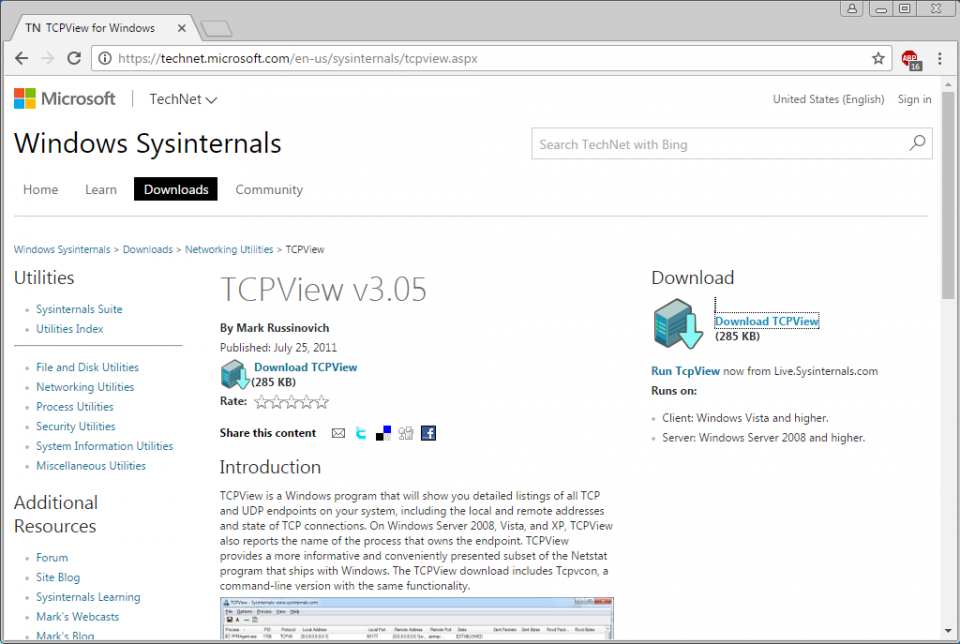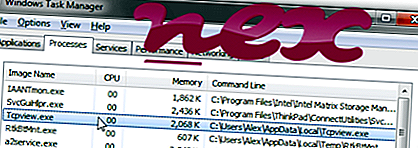

- #Windows tcpview how to#
- #Windows tcpview manual#
- #Windows tcpview software#
- #Windows tcpview windows#
Note that it is probably not easily possible to cause a program to not listen on a port (well, it is possible but that capability is referred to as a firewall.), but I don't think that was being asked here. To do this you must run it as administrator, of course. There is at least one program ( CurrPorts) that does exactly this and I used it today for the purpose of closing specific sockets on a process that was started before CurrPorts was started.
#Windows tcpview windows#
So all you really need is either for Windows to provide an API that allows this directly, or for someone to have written a program that operates somewhat like a VPN or Fiddler and gives you a way to close sockets that pass through it.
#Windows tcpview software#
Consider for a moment that the remote machine, the network card, the network cable, and your OS can all cause the socket to close.Ĭonsider also that Fiddler and Desktop VPN software can insert themselves into the network stack and show you all your traffic or reroute all your traffic. You don't have to be the current process owning the socket to close it. Killing the process that owns the connection is really a bad idea here because this would take down the server (all users would lose functionality when we just want to selectively and temporally drop this one connection). Normally, I would add a firewall to do the job, but this would take some time, and I was in an emergency situation. this user is doing bad things, we asked them to stop but the connection didn't get dropped somewhere along the way). Then, I discover that this connection is undesired (e.g.

A client makes a connection and port 56789 is allocated for it. I want to close/kill them.ĮDIT, for clarification: Let's say that my server listens TCP port 80.
#Windows tcpview how to#
I don't want answers on how to monitor them (I already do this).
#Windows tcpview manual#
But the answers looked like a manual page of netstat or netsh commands focusing on how to monitor the ports. Googling about this, I saw some people asking the same thing. It does not store any personal data.Does somebody knows how to close a TCP or UDP socket for a single connection via windows command line? The cookie is set by the GDPR Cookie Consent plugin and is used to store whether or not user has consented to the use of cookies. The cookie is used to store the user consent for the cookies in the category "Performance".

This cookie is set by GDPR Cookie Consent plugin. The cookies is used to store the user consent for the cookies in the category "Necessary".

The cookie is used to store the user consent for the cookies in the category "Other. The cookie is set by GDPR cookie consent to record the user consent for the cookies in the category "Functional". The cookie is used to store the user consent for the cookies in the category "Analytics". These cookies ensure basic functionalities and security features of the website, anonymously. Necessary cookies are absolutely essential for the website to function properly.


 0 kommentar(er)
0 kommentar(er)
